AI Chatbot Solutions for Streamlined Customer Service

Imagine a world where customer service is available anytime you need it, without long wait times or frustration. That’s exactly what AI chatbots bring to the table. These tools are transforming customer service by making it faster, smarter, and more efficient. For instance, AI chatbots can handle 80% of routine tasks, saving businesses up to 2.5 billion hours by 2024. They also help support teams resolve issues 44% faster, improving the quality of service by 35%.
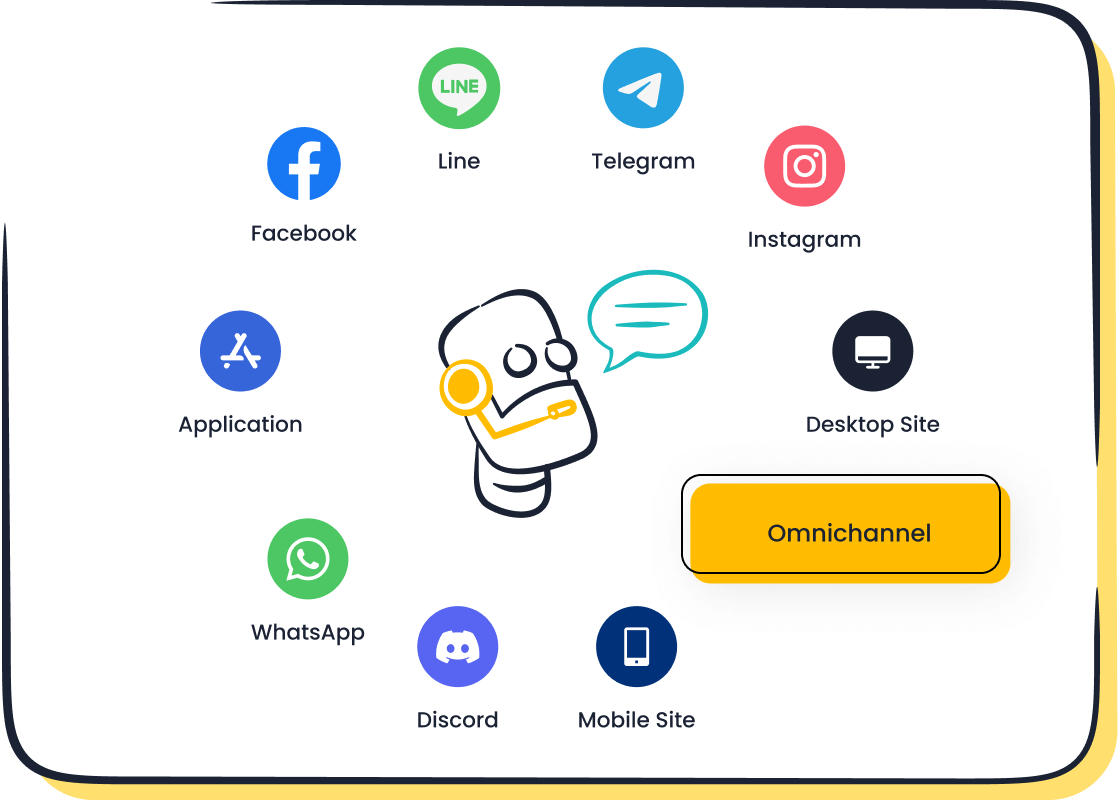
Customers love it too! About 73% of shoppers believe AI enhances their experience, while 90% value instant responses. Tools like Sobot’s ai chatbot solution make this possible by combining advanced technology with user-friendly features. Whether you’re a small business or a global brand, embracing chatbots can elevate your customer service game.
Benefits of AI Chatbot Solutions in Customer Service

24/7 Availability for Instant Support
Imagine needing help at midnight or during a holiday. With traditional customer service, you'd likely wait until business hours. But AI chatbots change the game by offering 24/7 customer support. They’re always online, ready to assist you whenever you need help. This constant availability ensures your customers never feel stranded, no matter the time or day.
For example, Sobot’s AI chatbot operates around the clock, handling inquiries across multiple channels like WhatsApp, SMS, and live chat. Whether it’s a simple FAQ or a complex query, the chatbot ensures your customers get instant responses. This not only improves customer satisfaction but also builds trust in your brand. After all, who doesn’t appreciate a service that’s always there for them?
Faster Response Times and Reduced Wait Times
Nobody likes waiting, especially when they need quick answers. AI chatbots excel at delivering better response times compared to traditional customer service channels. While human agents might take minutes—or even hours—to respond, chatbots reply in seconds. Take a look at this comparison:
| Service Type | Average Response Time |
|---|---|
| Traditional Customer Service | 20 minutes |
| AI Chatbot | Seconds |
This speed doesn’t just save time; it also enhances the overall customer experience. Sobot’s AI chatbot, for instance, uses advanced AI automation to provide real-time assistance. It can even handle multiple conversations simultaneously, ensuring no customer is left waiting. By streamlining workflows, you can resolve issues faster and keep your customers happy.
Cost Savings Through Automation
Running a customer service team can be expensive, especially when you factor in salaries, training, and infrastructure. AI chatbots offer a cost-effective solution by automating repetitive tasks and reducing the need for additional staff. Here’s how they help businesses save money:
- Chatbots can save up to 30% in customer support services.
- Automation by chatbots is projected to save $23 billion in the U.S. by handling 30% more tasks traditionally done by agents.
- By 2023, businesses adopting chatbots are expected to save $11 billion annually.
Sobot’s AI chatbot is a prime example of how automation can cut costs. It operates 24/7, triaging queries without requiring extra agents. This not only reduces expenses but also boosts efficiency. Plus, its no-coding-required setup makes it accessible for businesses of all sizes, helping you achieve significant savings without a steep learning curve.
Data-Driven Insights for Better Decision-Making
Have you ever wondered how businesses seem to know exactly what their customers want? The secret lies in data-driven insights. AI chatbots, like Sobot’s, don’t just answer questions—they collect and analyze valuable data from every interaction. This data helps you make smarter decisions that improve your customer service and overall business strategy.
How AI Chatbots Turn Data into Actionable Insights
Every time a customer interacts with your chatbot, they leave behind a trail of information. This could be their preferences, common complaints, or even how they navigate your website. AI chatbots analyze this data to uncover patterns and trends. Here’s what you can learn:
| Insight Type | Description |
|---|---|
| Customer Preferences | Understand what your customers like and tailor your offerings accordingly. |
| Pain Points | Identify recurring issues and address them to improve satisfaction. |
| Trends | Spot emerging trends and adapt your strategies to stay ahead. |
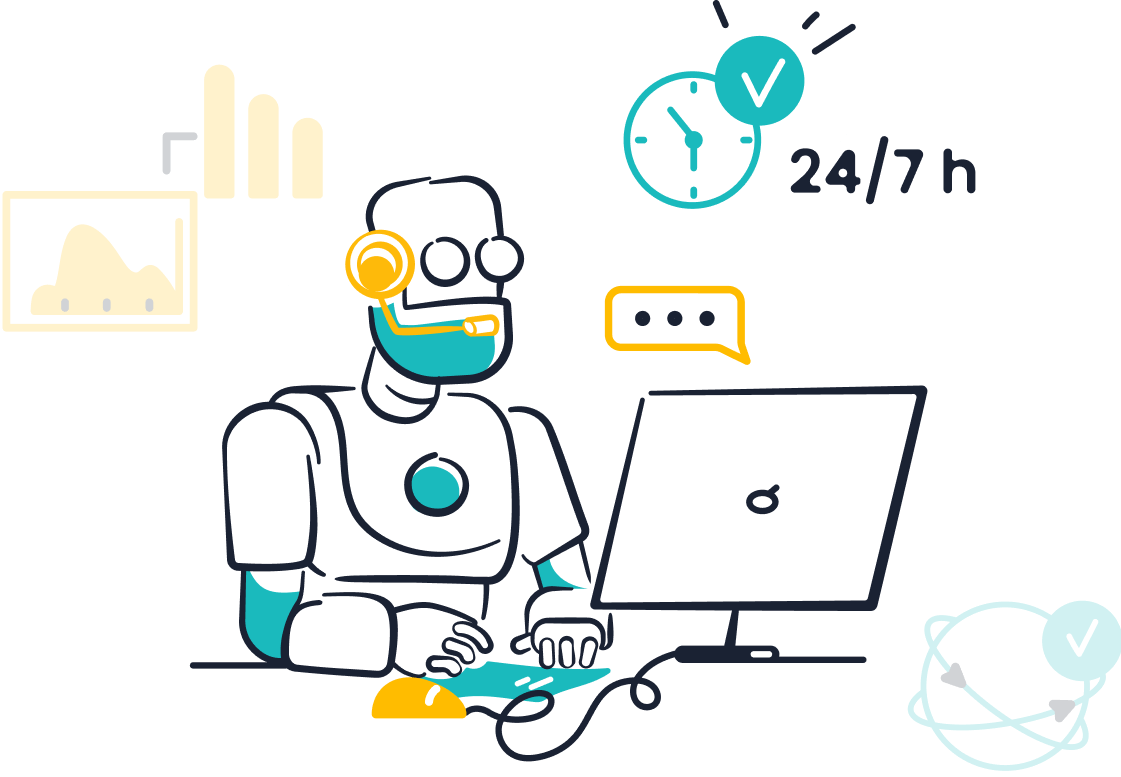
For example, Sobot’s AI chatbot uses advanced analytics to track customer behavior across multiple channels. It can reveal which products are most popular or highlight areas where customers face challenges. This kind of insight allows you to make proactive changes, ensuring your service stays relevant and effective.
Why Data-Driven Insights Matter
Data-driven insights aren’t just about numbers—they’re about understanding your customers on a deeper level. By analyzing customer behavior, you can refine your engagement strategies and create a more personalized experience. Here’s another look at what AI chatbots can uncover:
| Insight Type | Description |
|---|---|
| Customer Behavior | Learn how customers interact with your brand and adjust your approach. |
| Engagement Strategies | Use real data to improve how you connect with your audience. |
Imagine knowing exactly why customers abandon their carts or what makes them return to your store. With Sobot’s chatbot, you can access this kind of information in real-time. This helps you make decisions that not only solve immediate problems but also build long-term loyalty.
Real-World Impact: OPPO’s Success Story
Let’s take OPPO as an example. By using Sobot’s chatbot, OPPO gained insights into customer pain points and preferences. This allowed them to optimize their knowledge base and improve service efficiency. The results? An 83% chatbot resolution rate and a 57% increase in repurchase rates. These numbers show how data-driven insights can directly impact your bottom line.
The Bigger Picture
When you combine 24/7 availability with data-driven insights, you create a customer service experience that’s not just reactive but proactive. You’re no longer just solving problems—you’re anticipating them. Tools like Sobot’s AI chatbot make this possible by turning every interaction into an opportunity to learn and grow.
Key Use Cases for Customer Service Chatbots

Handling FAQs and Common Queries
You’ve probably asked a business a simple question like, “What are your store hours?” or “How do I reset my password?” These are common queries that can overwhelm customer service teams. That’s where chatbots shine. They handle FAQs effortlessly, giving you instant answers without waiting for a human agent.
For example, in the online retail industry, chatbots have reduced response times from 15 minutes to under 30 seconds. They also handle 70% of inquiries, leading to a 25% boost in customer satisfaction. In telecommunications, chatbots resolve 60% of technical issues without human help, cutting support costs by 35%.
| Industry | Key Metrics |
|---|---|
| Online Retailer | Response time reduced from 15 minutes to under 30 seconds; 70% of inquiries handled by chatbot; 25% increase in customer satisfaction. |
| Telecommunications | 24/7 support availability; 60% of technical issues resolved without human intervention; 35% reduction in support costs. |
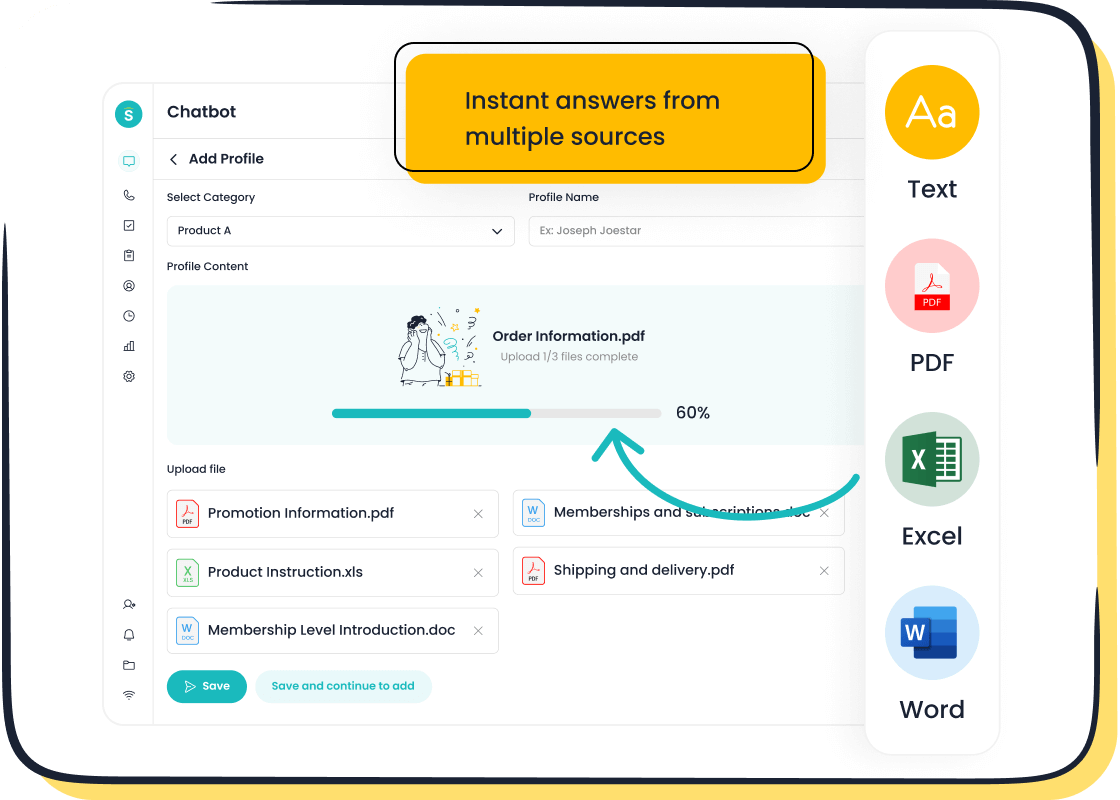
Sobot’s AI chatbot takes this a step further. It uses a knowledge base built from articles, PDFs, and more to provide accurate, instant replies. This means you get the answers you need, exactly when you need them.
Order Tracking and Status Updates
Waiting for an order can be stressful, especially if you don’t know where it is. Chatbots make tracking orders a breeze. They provide real-time updates, so you’re never left in the dark. Plus, they solve problems quickly using advanced algorithms.
Here’s how chatbots improve order tracking:
- Support tickets drop by 77% after chatbot adoption.
- Immediate responses reduce wait times and boost satisfaction.
- Personalized support makes the experience even better.
Sobot’s chatbot integrates seamlessly with your systems, offering instant updates across channels like WhatsApp and SMS. Whether you’re tracking a package or resolving a delivery issue, it ensures a smooth experience.
Personalized Product Recommendations
Imagine walking into a store and having someone recommend products tailored just for you. That’s what chatbots do online. By analyzing your browsing history and preferences, they suggest items you’re likely to love.
Chatbots can boost conversions by up to 30%. Shoppers interacting with AI-recommended products convert four times more often. They also reduce bounce rates by 20%, keeping you engaged longer.
Sobot’s AI chatbot excels in this area. It uses smart self-service and real-time intent assistance to guide you toward the perfect product. This not only enhances your shopping experience but also increases the likelihood of a purchase.
Assisting with Technical Troubleshooting
When it comes to technical issues, waiting for help can be frustrating. That’s where AI chatbots step in to save the day. They’re like your personal tech assistant, ready to guide you through troubleshooting steps anytime you need them. Whether it’s a software glitch or a hardware hiccup, chatbots make the process smoother and faster.
AI chatbots excel at diagnosing problems. They ask you relevant questions to pinpoint the issue. For example, if your internet isn’t working, the chatbot might ask, “Is your router on?” or “Have you tried restarting it?” Based on your answers, it pulls solutions from a database of known issues. This means you get accurate advice without waiting for a human agent.

Sobot’s AI chatbot takes this a step further. It doesn’t just provide solutions—it walks you through them. Imagine you’re trying to reset a device. The chatbot offers an interactive guide, showing you each step in real time. This hands-on approach helps you fix problems quickly and confidently.
Here’s why chatbots are game-changers for troubleshooting:
- They’re available 24/7, so you’re never stuck waiting for business hours.
- They automate ticket creation, ensuring your issue gets categorized and addressed faster.
- They empower you to resolve simple problems on your own, saving time and reducing frustration.
Take OPPO’s experience as an example. By using Sobot’s chatbot, they streamlined their technical support process. Customers received instant help, and human agents could focus on complex issues. This led to higher satisfaction rates and faster resolutions.
With tools like Sobot’s AI chatbot, technical troubleshooting becomes less of a headache. You get instant support, clear guidance, and the confidence to tackle issues on your own. It’s customer service reimagined for the digital age.
Tips for Implementing Sobot AI Chatbot
Integrating Chatbots with Existing Systems
When you’re adding a chatbot to your customer service setup, integration is key. It’s not just about plugging in a new tool—it’s about making sure it works seamlessly with your existing customer service channels. A well-integrated chatbot can unify your communication platforms, streamline processes, and improve customer satisfaction.
For example, Sobot’s AI chatbot is designed to integrate with existing customer service systems like live chat, email, and even social media platforms. This means your customers can get help wherever they are, without any disruptions. Whether they’re asking about an order on WhatsApp or troubleshooting an issue via SMS, the chatbot ensures a consistent experience.
Here’s a quick look at how different industries have successfully integrated chatbots:
| Industry | Example Description | Impact on Customer Satisfaction and Operational Efficiency |
|---|---|---|
| E-commerce | A major online retailer used chatbots for customer inquiries and order tracking. | Instant responses reduced wait times, improving customer satisfaction. Automation allowed agents to focus on complex issues, enhancing efficiency. |
| Financial Services | A bank deployed chatbots for customer support and transaction inquiries. | Cost savings from reduced support team size and 24/7 service availability improved customer experience, especially after hours. |
| Telecommunications | A telecom company used chatbots for troubleshooting and account management. | Improved response times and customer engagement through effective handling of common issues. |
By integrating Sobot’s AI chatbot, you can optimize workflows and ensure your team focuses on what matters most—delivering exceptional service.
Setting Clear Goals and Expectations
Before you implement a chatbot, you need to know what you want it to achieve. Setting clear goals and expectations ensures your chatbot aligns with your business objectives. Are you looking to reduce response times? Do you want to handle more inquiries without adding staff? Defining these goals helps you measure success.
For instance, if your goal is to improve customer satisfaction, you might track metrics like response accuracy or customer feedback scores. If cost savings are your priority, focus on automation rates and reduced agent workload. Sobot’s AI chatbot makes it easy to align with these goals. Its customizable features let you tailor the chatbot to meet your specific needs, whether it’s handling FAQs or providing personalized product recommendations.
Here’s a tip: Involve your team in the planning process. When everyone understands the chatbot’s purpose, it’s easier to set realistic expectations. This also helps you identify potential challenges early on, so you can address them before they become issues.
Monitoring and Optimizing Chatbot Performance
Once your chatbot is up and running, the work doesn’t stop there. Regular monitoring and optimization are essential to ensure it performs at its best. By keeping an eye on key metrics, you can identify areas for improvement and make adjustments as needed.
Here are some important metrics to track:
| Metric | Description |
|---|---|
| Click-through rates (CTR) | Indicates at which point customers leave the chatbot, helping to identify areas for improvement. |
| Chatbot handoff rate | Percentage of customers redirected to human agents, indicating the chatbot's limitations. |
| Daily conversation volumes | Tracks the number of conversations over time, useful for understanding usage patterns. |
| User retention | Measures how many users return to use the chatbot again, indicating its effectiveness. |
| Bounce rate | Assesses the rate at which users leave the site without engaging, which can be correlated with chatbot interactions. |
| Leads captured | Quantifies the number of potential customers who express interest by sharing contact information. |
| Response accuracy | Evaluates how accurately the chatbot answers user queries, crucial for customer satisfaction. |
| User engagement | Measures how actively users interact with the chatbot, reflecting its effectiveness in engaging customers. |
| Error rates | Tracks the frequency of errors in chatbot responses, important for identifying areas needing improvement. |
| Customer satisfaction scores | Gauges overall user satisfaction with the chatbot experience, essential for assessing its success. |
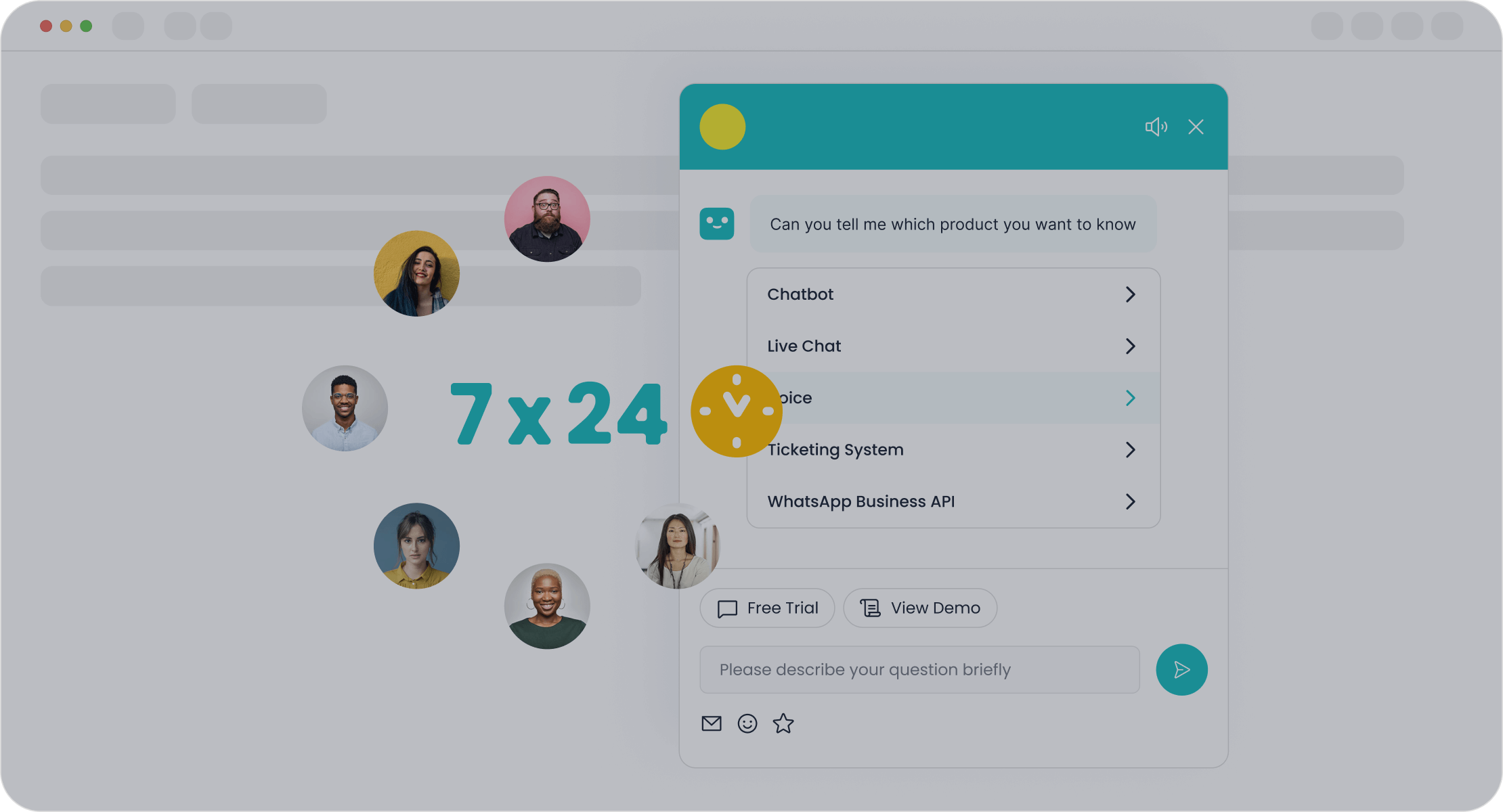
Sobot’s AI chatbot provides detailed analytics to help you monitor these metrics. For example, if you notice a high handoff rate, you can refine the chatbot’s knowledge base to handle more queries independently. Or, if response accuracy is low, you can retrain the AI model for better results.
Optimization isn’t a one-time task. It’s an ongoing process that ensures your chatbot continues to meet your customers’ needs. With tools like Sobot’s AI chatbot, you can stay ahead of the curve and deliver a consistently excellent experience.
Training the AI Model for Accuracy and Relevance
Training an AI chatbot is like teaching a student—it needs the right information and guidance to perform well. When you train your chatbot effectively, it becomes more accurate and relevant in its responses. This means your customers get better answers, faster. But how do you make sure your chatbot is ready to handle real-world conversations? Let’s break it down.
Why Training Matters
Imagine asking a chatbot a question and getting a confusing or incorrect answer. Frustrating, right? That’s what happens when a chatbot isn’t properly trained. By focusing on training, you can ensure your AI understands your customers’ needs and delivers helpful responses every time.
Here’s what proper training can achieve:
- Improved Accuracy: A well-trained chatbot can answer questions with precision, reducing errors and misunderstandings.
- Enhanced Relevance: It tailors responses to match the context of the conversation, making interactions feel more natural.
- Better Customer Experience: Accurate and relevant answers lead to happier customers and stronger trust in your brand.
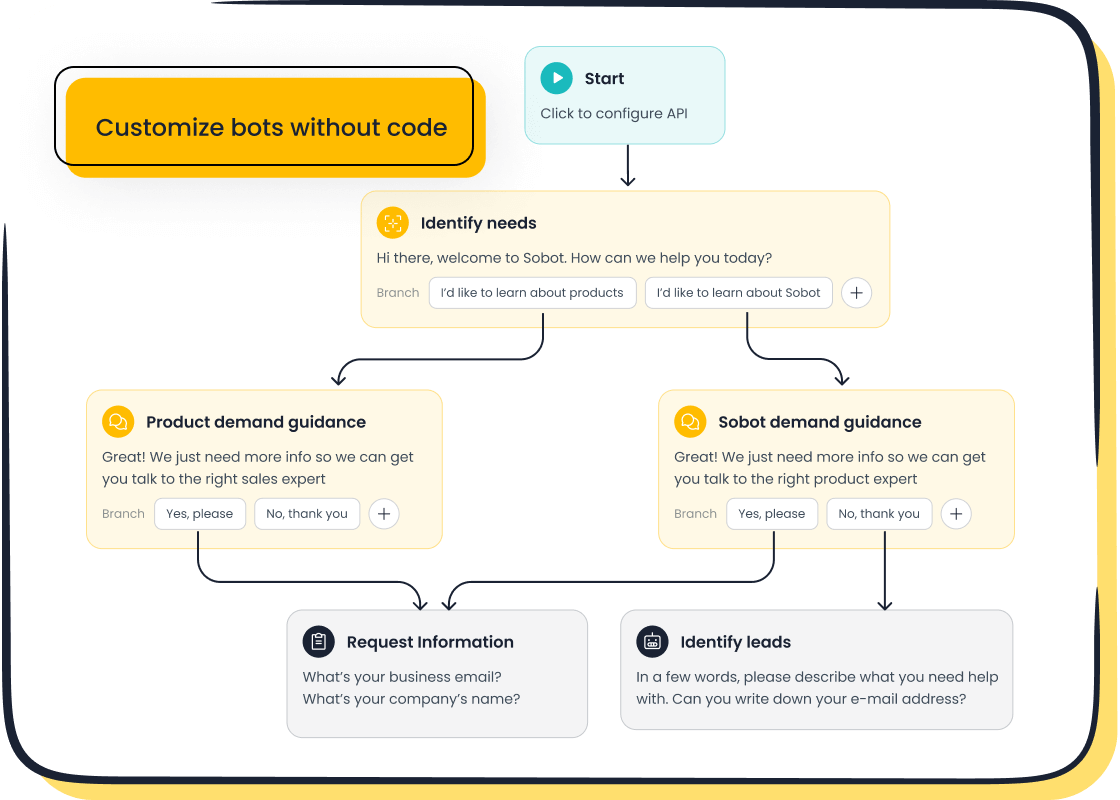
For example, Sobot’s AI chatbot uses a knowledge base built from articles, PDFs, and other resources. This ensures it has the right information to provide accurate answers. Plus, its multilingual capabilities mean it can assist customers in their preferred language, making interactions even more personalized.
How to Train Your Chatbot
Training your chatbot doesn’t have to be complicated. Here are some steps to get started:
-
Build a Strong Knowledge Base
Think of the knowledge base as your chatbot’s brain. It should include FAQs, product details, and troubleshooting guides. Sobot’s chatbot makes this easy by allowing you to upload information from various sources like Excel files or text snippets. -
Use Real Conversations for Training
Analyze past customer interactions to identify common questions and issues. This helps you train the chatbot to handle real-world scenarios effectively. -
Test and Refine Regularly
Training isn’t a one-time task. You need to test your chatbot’s performance and make adjustments as needed. For instance, if it struggles with certain queries, you can update its knowledge base or tweak its algorithms. -
Leverage AI Insights
Tools like Sobot’s chatbot provide analytics to help you understand how well your AI is performing. Metrics like response accuracy and user satisfaction can guide your training efforts.
The Impact of Training
When you invest in training, the results speak for themselves. Studies show that advanced AI models like ChatGPT version 4 outperform earlier versions in accuracy, especially in complex areas like medical question-answering. However, challenges remain. Raters often find it hard to assess the reliability of AI outputs, highlighting the importance of continuous improvement. Additionally, research reveals that large language models (LLMs) sometimes fail to align with scientific consensus, with two-thirds of key messages being missed.
These findings emphasize the need for ongoing training and optimization. By keeping your chatbot updated and aligned with your business goals, you can ensure it remains a valuable asset.
Real-World Example: OPPO’s Success
OPPO, a global leader in smart devices, partnered with Sobot to enhance its chatbot’s accuracy and relevance. By optimizing its knowledge base and leveraging AI-driven insights, OPPO achieved an impressive 83% chatbot resolution rate. This not only improved customer satisfaction but also boosted repurchase rates by 57%. Their success shows how proper training can transform customer service.
Final Thoughts
Training your AI chatbot is an investment in your business’s future. It ensures your customers get the support they need, when they need it. With tools like Sobot’s AI chatbot, you have everything you need to create a smart, reliable, and customer-focused solution. So, take the time to train your chatbot—it’s worth it. 😊
Challenges and Solutions in AI Chatbot Implementation
Addressing Privacy and Data Security Concerns
When you implement AI chatbots, privacy and data security often become top priorities. Customers want to know their personal information is safe. To build trust, you need to take proactive steps to protect their data.
Here’s how you can ensure security:
- Use encryption to safeguard data during storage and transmission.
- Limit access to sensitive information with strict access controls.
- Conduct regular security audits to identify and fix vulnerabilities.
Transparency also plays a big role. Let your customers know how their data is collected, stored, and used. Clear privacy policies and compliance with regulations like GDPR show you’re serious about protecting their information. Sobot’s AI chatbot, for example, adheres to these standards, ensuring secure and compliant interactions across all channels.
By prioritizing security, you not only protect your customers but also strengthen their trust in your brand.
Overcoming Resistance from Customer Service Teams
Introducing AI chatbots can sometimes make your team uneasy. They might worry about job security or feel unsure about how AI fits into their workflow. To ease these concerns, communication is key.
Start by explaining the purpose of the chatbot. It’s not replacing your team—it’s helping them. Chatbots handle repetitive tasks, freeing up your agents to focus on complex issues. Involve your team early in the process to give them a sense of ownership.
Training also makes a big difference. Equip your team with the skills they need to work alongside AI. Sobot’s chatbot, for instance, is user-friendly and requires no coding, making it easy for your team to adapt. With leadership support and proper training, you can turn resistance into enthusiasm.
Managing Implementation Costs and Complexity
AI chatbot implementation can feel overwhelming, especially when you think about the costs and technical challenges. But with the right approach, you can simplify the process and maximize your ROI.
Start by choosing a solution that fits your needs. Sobot’s AI chatbot, for example, offers a no-coding-required setup, reducing complexity and saving time. It also integrates seamlessly with existing systems, so you don’t have to overhaul your infrastructure.
The cost savings are significant too. By automating tasks, chatbots reduce the need for additional agents, cutting expenses by up to 50%. Plus, they boost agent productivity, allowing your team to handle more inquiries efficiently.
Successful chatbot implementations don’t have to break the bank. With careful planning and the right tools, you can achieve a smooth rollout and long-term benefits.
Ensuring Chatbots Provide Human Escalation Options
AI chatbots are great at handling routine tasks, but sometimes, customers need a human touch. That’s why offering human escalation options is so important. It ensures your customers always have a way to connect with a real person when their issues are too complex for a chatbot to handle. This balance between automation and human support creates a seamless customer service experience.
Imagine this: A customer is trying to troubleshoot a technical issue. The chatbot provides some steps, but the problem persists. Instead of leaving the customer frustrated, the chatbot can escalate the conversation to a human agent. This transition ensures the customer gets the help they need without starting over. Sobot’s AI chatbot excels at this. It automates routine queries but also integrates escalation options, so your team can step in when necessary.
Here’s why this matters. Studies show that combining chatbot interactions with human intervention improves customer satisfaction significantly. In the hospitality industry, for example, guests often need nuanced conversations. Chatbots handle basic inquiries, but when things get tricky, they pass the conversation to a human agent. This approach enhances the overall experience.
| Case Study | Key Benefits |
|---|---|
| Chatbot Interactions | Balances automation with human intervention, ensuring users get the help they need. |
| Hospitality Industry | Allows guests to transition to human agents for complex issues, boosting satisfaction. |
Sobot’s chatbot makes this process effortless. It uses smart routing to connect customers to the right agent based on their query. This not only saves time but also ensures a smoother resolution. Plus, the chatbot collects all the context from the conversation, so the agent doesn’t have to ask repetitive questions.
By offering human escalation options, you show your customers that you care about their experience. It’s not just about solving problems—it’s about building trust and loyalty. With tools like Sobot’s AI chatbot, you can strike the perfect balance between efficiency and empathy. 😊
Best Practices for Customer Service Chatbots
Personalizing Customer Interactions
Imagine chatting with a service that knows your name, remembers your preferences, and offers exactly what you need. That’s the magic of personalization! When customer service chatbots greet users by name or suggest relevant products, they create a sense of connection. This makes customers feel valued and recognized, which boosts satisfaction and engagement.
For example, Sobot’s AI chatbot excels at personalization. It analyzes user data to tailor responses and recommend products based on browsing history. Whether it’s suggesting a new gadget or offering a discount on a favorite item, these small touches make a big difference. Studies show that personalized interactions significantly enhance the user experience, turning one-time buyers into loyal customers.
Offering Seamless Human Escalation
Even the smartest chatbot can’t solve every problem. That’s why it’s crucial to offer a smooth transition to a human agent when needed. Customers appreciate quick responses from chatbots but also value the empathy and expertise of human support for complex issues.
Here’s how seamless escalation improves satisfaction:
- Customers enjoy a frustration-free handoff between chatbots and agents.
- Immediate assistance from AI combines with personalized support from humans.
- Businesses build stronger relationships by meeting customer needs effectively.
Sobot’s chatbot ensures this process is effortless. It uses smart routing to connect users to the right agent, carrying over all conversation details. This saves time and avoids repetitive explanations, leaving customers happier and more loyal.
Continuously Optimizing Chatbot Workflows
A chatbot isn’t a “set it and forget it” tool. To keep it effective, you need to regularly refine its workflows. Start by simplifying conversation paths so users can reach their goals faster. Add intuitive menus and quick replies to make navigation easier. If a conversation goes off track, guide users back with clear prompts.
Metrics like user satisfaction, resolution rates, and response accuracy help you measure success. For instance, Sobot’s chatbot provides detailed analytics to track performance. You can review conversation logs, analyze feedback, and identify areas for improvement. By continuously optimizing, you ensure your chatbot stays relevant and delivers top-notch service.
Pro Tip: Regular updates and training keep your chatbot aligned with customer needs, ensuring it remains a valuable asset for your business.
Gathering Feedback to Improve Customer Experience
Gathering feedback is one of the best practices for improving your customer experience. It’s like having a direct line to your customers’ thoughts. When you know what they love and what frustrates them, you can make better decisions to enhance their interactions with your brand.
Start by making it easy for customers to share their opinions. Use tools like post-chat surveys or quick rating systems. For example, after a chatbot session, you could ask, “Was this helpful?” or “How would you rate your experience?” These simple questions can reveal a lot about how well your chatbot is performing.
Another great practice is analyzing feedback trends. If multiple customers mention the same issue, it’s a sign that something needs fixing. Sobot’s AI chatbot, for instance, collects feedback after every interaction. This data helps businesses identify pain points and improve their services. Imagine discovering that customers frequently ask about a specific product feature. You could update your chatbot’s knowledge base to address this more effectively.
Don’t forget to act on the feedback you receive. Customers notice when their suggestions lead to real changes. For example, OPPO used Sobot’s solutions to optimize its knowledge base based on customer input. This led to an 83% chatbot resolution rate and a 57% increase in repurchase rates. That’s the power of listening to your customers!
Finally, keep the feedback loop open. Let customers know their voices matter. Share updates like, “Thanks to your feedback, we’ve improved our chatbot’s response time!” This builds trust and shows you’re committed to delivering the best customer experience.
Pro Tip: Regularly review feedback and adjust your chatbot workflows. This ensures your service stays relevant and effective.
AI chatbots are revolutionizing customer service. Their 24/7 availability ensures customers always get support, no matter the time. They improve response times, reduce costs, and deliver personalized experiences that keep customers coming back. With scalability, businesses can handle more inquiries without extra expenses. Plus, data analysis from chatbots helps you make smarter decisions to enhance your service.
To unlock these benefits, proper implementation and optimization are essential. Following best practices, like training your chatbot and monitoring its performance, ensures it meets your goals. Tools like Sobot’s ai chatbot solution make this process seamless, offering multilingual support and advanced features to elevate your customer service.
Now’s the time to embrace AI chatbots. They’re not just tools—they’re game-changers that give your business a competitive edge. Start today and transform how you connect with your customers. 😊
FAQ
What is an AI chatbot, and how does it work?
An AI chatbot is a virtual assistant that uses artificial intelligence to interact with users. It understands questions, provides answers, and performs tasks. For example, Sobot’s AI chatbot uses a knowledge base and advanced algorithms to deliver instant, accurate responses across multiple channels like WhatsApp and SMS.
Can AI chatbots replace human agents entirely?
No, AI chatbots complement human agents by handling repetitive tasks. They free up your team to focus on complex issues. Sobot’s chatbot even offers seamless human escalation, ensuring customers always get the support they need when automation isn’t enough.
How do AI chatbots improve customer satisfaction?
AI chatbots provide 24/7 support, instant responses, and personalized interactions. For instance, Sobot’s chatbot boosts satisfaction by resolving 83% of queries autonomously, as seen in OPPO’s success story. Customers appreciate the speed and convenience these tools offer.
Are AI chatbots secure for handling customer data?
Yes, when implemented correctly. Sobot’s AI chatbot ensures data security with encryption, GDPR compliance, and regular audits. These measures protect sensitive information, building trust with your customers.
Do I need coding skills to set up Sobot’s AI chatbot?
Not at all! Sobot’s chatbot features a point-and-click interface, making it easy for anyone to design workflows. You can deploy it quickly without technical expertise, saving time and resources.
See Also
Enhancing Customer Satisfaction Through E-commerce Chatbots
Simple Ways to Integrate Chatbots on Your Website
Key Advantages of Using Chatbots on Websites